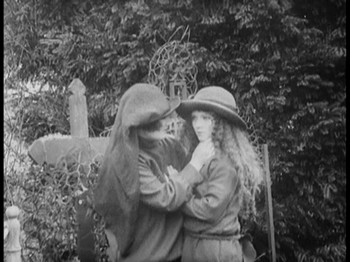One of the most obvious stylistic devices used by the filmmaker to represent the subjectivity and emotional state of a character is the use to flashbacks. After the main female character has been seduced by the male character, she has flashbacks of her childhood. This is used possibly as contrast of the innocence and simplicity of childhood, or to foreshadow the birth of her own child. Nonetheless, by breaking the chronological order with memories of the past, it creates a melancholic tone and emphasizes the subjectivity of the main character.
Another example is the use of double exposure to express the point of view of the subject. One interesting scene where this is used is while the older sister is laying in bed. The film was edited to that at one moment you see the girl laying about in bed, looking at the alarm clock and then intermixed with that is double exposed images of a rapid street scene mixed with possibly images of a woman's body. It was as if the film maker was trying to show us inside the mind of the older sister.
The third way that the filmmaker used stylistic devices to represent the emotional state of a character is by using rapid montages. After the main female character gave birth to her child and is thinking about suicide there is a very intense moment where the film maker focuses on her eyes and and then mixes that shot with a rapid montage of a hectic street scene. Its almost as if the audience sees reality though the eyes of the girl and then sees the confusion and disparity on the close-up of the expressive face.


